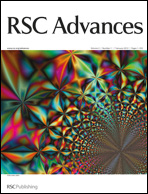Optimum reaction conditions for the quantitative preparation of the highly reactive 3,4-di(methylene)tetrahydrothiophene-1,1-dioxide are described. The method involves the zinc-induced 1,4-debromination of 3,4-bis(bromomethyl)-2,5-dihydrothiophene-1,1-dioxide in acetone solvent either by using conventional heating, microwave or ultrasonic irradiation. The [4+2] cycloaddition reaction of 3,4-di(methylene)tetrahydrothiophene-1,1-dioxide with dienophiles such as DMAD and C60 led to the efficient and clean formation of the corresponding Diels–Alder cycloadducts. Specifically for [60]fullerene, the short-chain C60 monoadduct was formed in a short reaction time and in high overall yield (56%). In contrast, the iodine-induced 1,4-debromination using KI in toluene, in the presence of 18-crown-6 as a phase transfer catalyst, failed to give the corresponding [4+2] C60 monoadduct at room temperature or in refluxing toluene and a low product yield (13%) was only obtained at a temperature of 45–50 °C.
![Graphical abstract: Quantitative preparation of 3,4-di(methylene)tetrahydrothiophene-1,1-dioxide by Zn-induced 1,4-debromination. A valuable 6-C reactive diene in [4+2] cycloadditions with DMAD and [60]fullerene](/en/Image/Get?imageInfo.ImageType=GA&imageInfo.ImageIdentifier.ManuscriptID=C2RA22502F&imageInfo.ImageIdentifier.Year=2012)
You have access to this article
 Please wait while we load your content...
Something went wrong. Try again?
Please wait while we load your content...
Something went wrong. Try again?
![Graphical abstract: Quantitative preparation of 3,4-di(methylene)tetrahydrothiophene-1,1-dioxide by Zn-induced 1,4-debromination. A valuable 6-C reactive diene in [4+2] cycloadditions with DMAD and [60]fullerene](/en/Image/Get?imageInfo.ImageType=GA&imageInfo.ImageIdentifier.ManuscriptID=C2RA22502F&imageInfo.ImageIdentifier.Year=2012)

 Please wait while we load your content...
Please wait while we load your content...